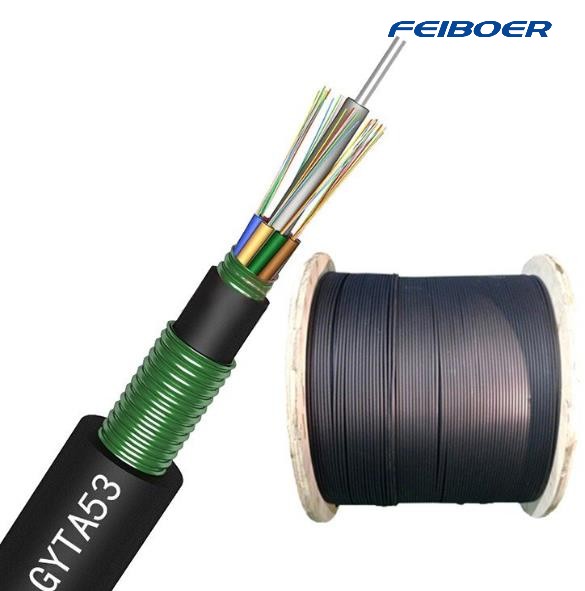Loose sleeve twisted dual-guard optical cable GYTY53 (2-432 core) is a type of fiber optic cable that is designed to provide protection against harsh environments and other potential hazards. This cable is made up of multiple layers, including strength members, water-blocking materials, and an outer sheath. It is commonly used in outdoor applications, such as power lines and communication networks, due to its durability and flexibility. However, like any technology, there are advantages and disadvantages associated with the use of GYTY53 cables. In this article, we will explore the advantages and disadvantages of GYTY53 cables in detail.

Advantages:
Dual-Guard Design: The GYTY53 cable features a dual-guard design, which provides additional protection against potential hazards, such as moisture, rodents, and other environmental factors. This makes it an ideal choice for outdoor applications, where the cable may be exposed to harsh conditions.
High Capacity: The GYTY53 cable can support up to 432 cores, making it an ideal choice for large-scale communication networks that require high capacity and long-distance transmission.
Durability: The GYTY53 cable is highly durable and can withstand harsh weather conditions, extreme temperatures, and environmental hazards such as chemicals and rodents. This makes it ideal for use in outdoor applications, such as power lines and communication networks.
Flexibility: The GYTY53 cable is highly flexible, which makes it easy to install and handle. This is important in applications where the cable needs to be routed around obstacles or in tight spaces.
Low attenuation: GYTY53 cables have low attenuation, meaning that the signal loss over long distances is minimal. This makes it an ideal choice for long-distance communication networks.
High Transmission Speed: GYTY53 cables are capable of transmitting data at high speeds, which makes them an ideal choice for data centers and other high-speed applications.
Loose Tube Design: The loose tube design of the GYTY53 cable makes it easier to install and maintain, as individual fibers can be easily accessed and repaired without affecting the rest of the cable.
Disadvantages:
Vulnerability to Moisture: Although GYTY53 cables are designed to be water-resistant, they can be vulnerable to moisture in certain conditions. This can result in signal loss and other problems.
Limited Support for High-Temperature Environments: GYTY53 cables are not suitable for use in high-temperature environments, as the outer sheath can melt or deform.
Limited Support for High-Frequency Applications: GYTY53 cables are not suitable for use in high-frequency applications, as the signal loss over long distances can be significant.
Limited Support for High-Power Applications: GYTY53 cables are not suitable for use in high-power applications, as the signal loss over long distances can be significant.
Installation Complexity: The installation of GYTY53 cables can be complex, and requires skilled technicians to properly install and terminate the cables. This can result in higher installation costs.
Limited Flexibility: Although GYTY53 cables are highly flexible, they are limited in terms of the bend radius they can support. This can be a problem in applications where the cable needs to be routed around tight corners or obstacles.
Conclusion:
In conclusion, GYTY53 cables are a popular choice for communication networks that require high capacity and long-distance transmission capabilities, and need protection against harsh environmental conditions. They offer several advantages, including dual-guard design, high capacity, durability, flexibility, low attenuation, high transmission speed, and loose tube design. However, they also have some disadvantages, including vulnerability to moisture, limited support for high-temperature and high-frequency applications, limited support for high-power
04-24
202404-23
202404-23
202404-08
202404-07
202403-26
202403-26
202403-18
202403-18
202403-13
2024
